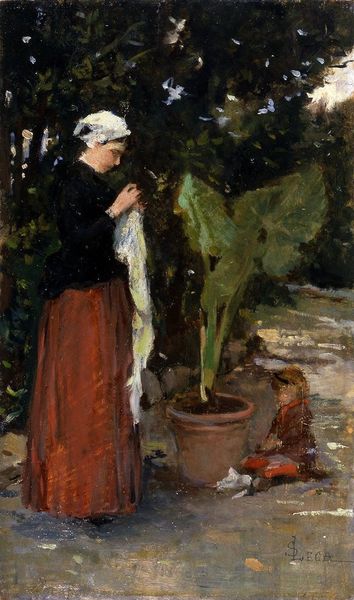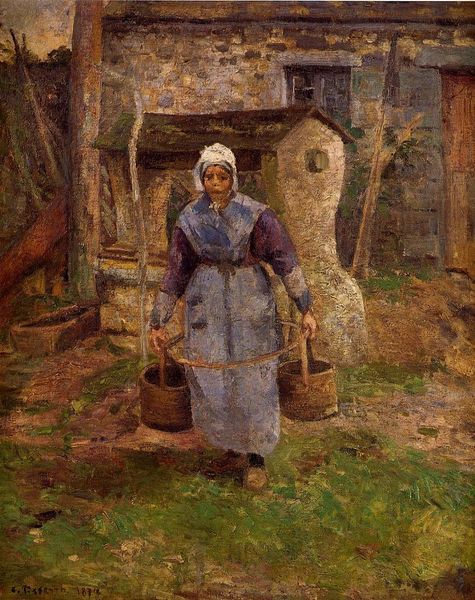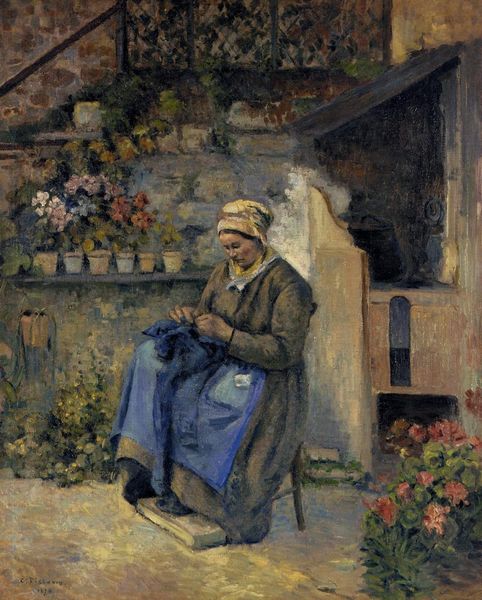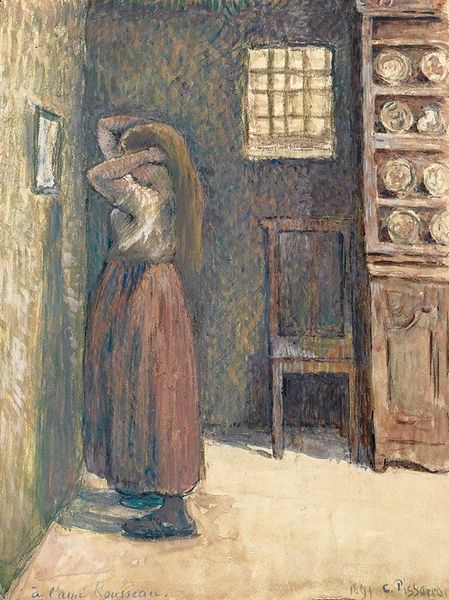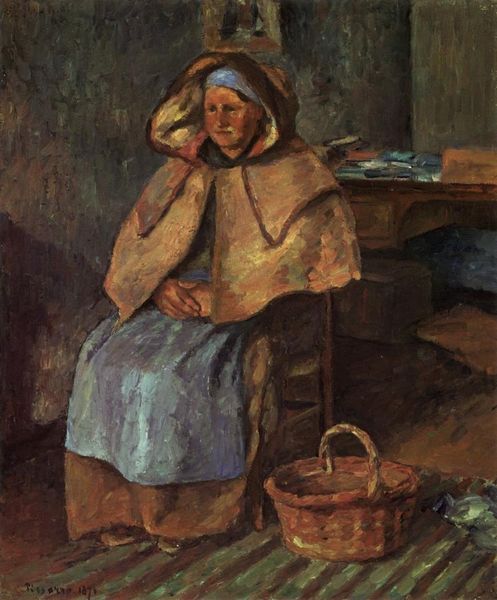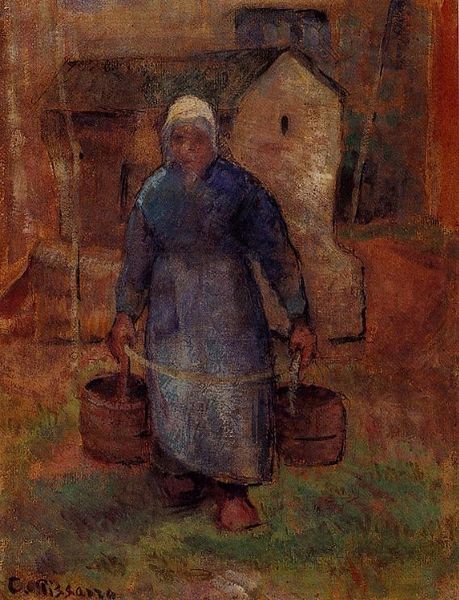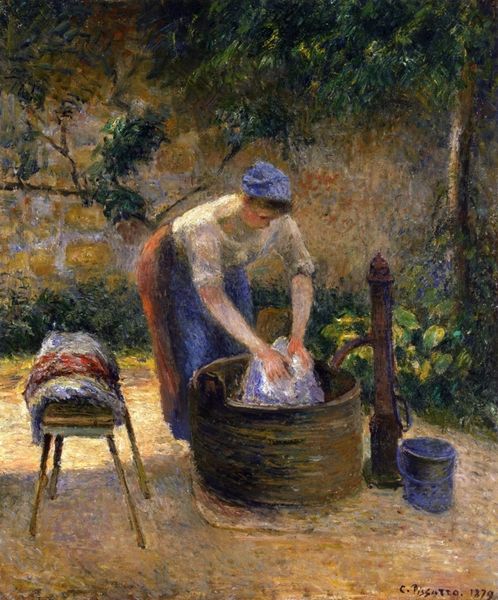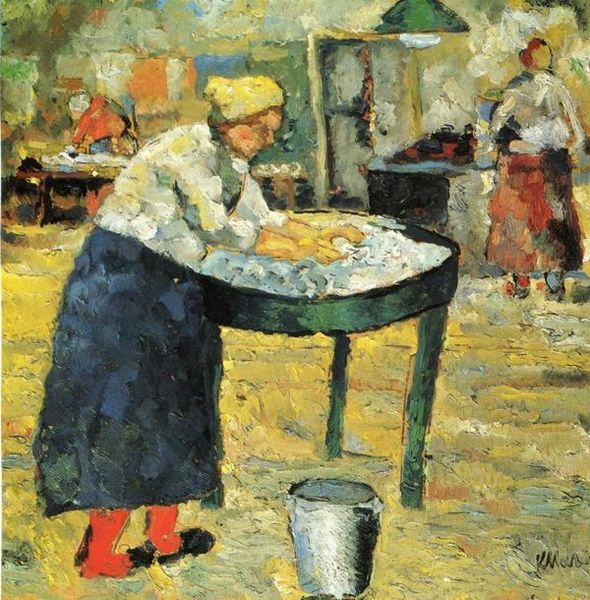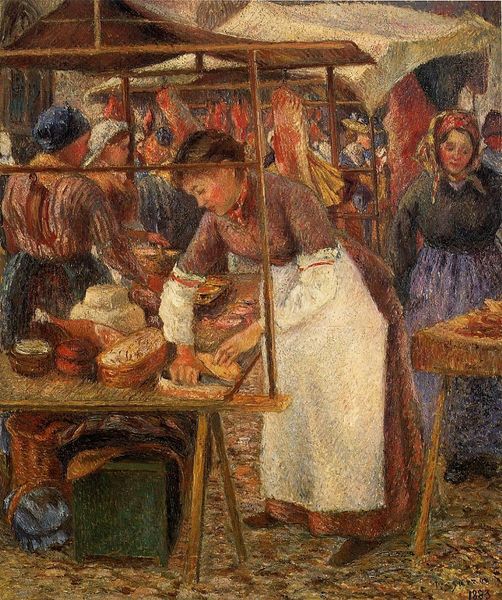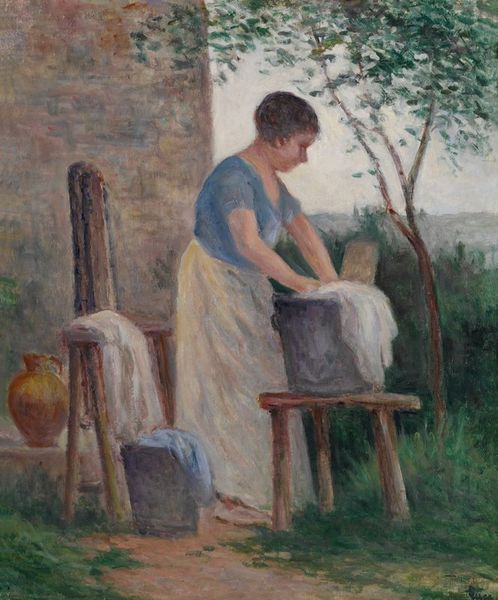
Dimensions: 27 x 20.6 cm
Copyright: Public domain
Curator: Here we have Camille Pissarro’s "The Laundry Woman," painted in 1898. It's an oil painting that wonderfully captures a fleeting moment through an impressionistic lens. Editor: The word that comes to mind immediately is "humid." You can almost feel the dampness in the air, clinging to everything – even the colours. It feels heavy. Curator: Indeed. Pissarro's focus extends beyond mere depiction. He’s grappling with the realities of labor and class, framing this woman not as an idealised peasant but as a worker performing essential, often invisible, labour. It demands consideration of gendered labor in rural settings at the turn of the century. Editor: Invisible labor. That’s exactly right. But isn't it fascinating how he doesn't portray her exhaustion or struggle directly? It's more in the bend of her body, the slight droop of her shoulders, and the blurring of details in the scene. The background, like a hazy memory. Curator: The seemingly casual brushstrokes are quite deliberate. By leaving forms somewhat undefined, he challenges academic conventions that demand rigid representation. Pissarro was always politically engaged, viewing art as a tool to disrupt bourgeois sensibilities. He places this ordinary woman front and centre. Editor: I love that he's celebrating the mundane. Finding beauty in the everyday rituals of working-class life. I find a bit of melancholy there, too, a sense of life continuing despite hardship. The child in the background holding flowers almost serves as counterpoint to the gruelling routine we witness. Curator: The presence of the child does introduce complexities. It reminds us of the cycles of labour and domesticity but might even point to issues around child labour depending on broader intersectional analyses. Editor: Well, for me, there’s also a quiet dignity radiating from this figure, and something very poignant, something universally human. I’m struck by its ability to linger with you, make you ponder, long after you move on to the next work. Curator: Ultimately, "The Laundry Woman" stands as a testament to Pissarro’s commitment to capturing the world as he saw it and, maybe even more profoundly, his investment in provoking dialogue about social realities that persist to this day. Editor: I concur completely. It’s those small moments that give us the feels, the big feels. This scene hits that sweet spot in its humble yet deeply affecting vision.
Comments
No comments
Be the first to comment and join the conversation on the ultimate creative platform.
